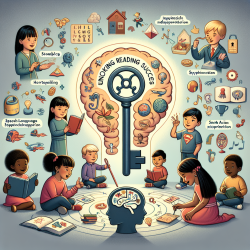Language intervention programming is undergoing a revolution. This evolution, as discussed in Carol Lynn Waryas' research paper, Language Intervention Programming As A Revolutionary Activity, highlights the importance of adapting both language targets and training procedures as we gain more understanding of language development and its use.
Waryas emphasizes the multidimensional nature of language, the role of alternative modality training, and the relationship between language, cognitive, and social development. This blog will help practitioners implement the outcomes of Waryas' research to improve their skills and encourage further research.
Key Issues in Language Intervention
Understanding the developmental sequence is crucial for constructing effective language intervention programs. Practitioners should focus on:
- Developmental Information: Analyze the normal course of language development to design intervention programs.
- Language in 3-D: Address syntax, semantics, and pragmatics simultaneously in training.
- Language as Communication: Recognize language's role in establishing and maintaining social relationships.
Developmental Approaches to Language Training
Developmental information provides the sequence of emergence of language structures and functions. It's essential to consider:
- Syntax: The structure of language.
- Semantics: The meaning behind language.
- Pragmatics: The function of language in social interactions.
By integrating these aspects, practitioners can create more effective language intervention programs. For example, initial training might focus on two-word structures like "give cookie," addressing syntax, semantics, and pragmatics simultaneously.
Alternative Modalities in Language Training
Alternative modalities, such as sign language, can be effective in language intervention. However, it's important to:
- Determine whether the modality will be a language initiator or the primary system of communication.
- Ensure the child's environment supports the chosen modality.
- Consider the implications of different modalities, such as ASL vs. Signed English.
Language in the Context of Total Development
Language development is intertwined with cognitive and social development. Practitioners should:
- Use language sampling and non-standardized elicitation techniques for assessment.
- Consider the child's cognitive and social functioning when identifying language deficits.
- Involve parents, teachers, and peers in the language training process to ensure generalization.
Strategies for the Language Revolution
Language intervention programming is constantly evolving. Practitioners should:
- Stay informed about theoretical advances in the field.
- Integrate and synthesize information from various disciplines.
- Adopt structured programming that interfaces with the individual's linguistic and interpersonal needs.
By taking an active role in the language revolution, practitioners can provide more effective services to communicatively-handicapped individuals.
To read the original research paper, please follow this link: Language Intervention Programming As A Revolutionary Activity.










